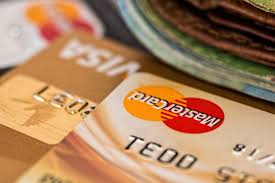Last updated Jun. 19, 2024 by Peter Jakes
What Is Counter Credit and What Does It Mean On a Bank Statement?
In an increasingly digitized world where online banking and digital transactions have become the norm, it’s easy to overlook traditional banking activities. One such traditional banking term that continues to appear on bank statements is "counter credit." Despite its importance, many people find the term confusing or unclear. This article aims to provide a comprehensive understanding of what counter credit is, how it functions, and its implications on your bank statement.
Understanding Counter Credit
Counter credit refers to a traditional banking activity where funds are deposited directly into a bank account through a bank’s teller service. Unlike electronic transfers, direct deposits, or mobile check deposits, counter credit is initiated in person at a bank branch. The term originates from the physical "counter" at the bank where the transaction is made. Counter credit can involve depositing cash, checks, or other negotiable instruments into a bank account.
Key Characteristics
-
In-Person Activity: The defining feature of counter credit is that it requires the account holder (or an authorized person) to visit the bank branch to make a deposit.
-
Immediate Processing: In most cases, counter credits are processed immediately or within a very short time frame. This means that funds are generally available for use soon after the deposit is made.
-
Verification: Counter credits usually involve a verification process where the teller checks the validity of the deposit, whether it’s cash or a check, ensuring it complies with banking regulations and policies.
- Receipt Issuance: Upon successful completion of the deposit, the bank will issue a receipt that serves as proof of the transaction. This receipt often includes details like the amount deposited, the date, and the account number.
Types of Counter Credit Deposits
-
Cash Deposits: This involves depositing physical currency (bills and coins) into your account. This is useful for individuals or businesses that handle cash transactions regularly.
-
Check Deposits: Depositing a check drawn on the same or a different bank is also considered counter credit. The funds may have a clearing period before they become fully available.
- Mixed Deposits: Some deposits may comprise both cash and checks. These are still processed as counter credits but might have varying availability times for funds.
The Mechanics of Counter Credit
To understand how counter credit works, let’s consider a typical scenario:
-
Preparation: Gather the funds you wish to deposit, whether it is cash, checks, or a combination of both. Make sure to endorse checks properly.
-
Visit the Bank: Go to your bank’s nearest branch and fill out a deposit slip, which typically requires details such as your account number, the type of deposit (cash/check), and the amount.
-
In-person Transaction: Approach the teller and submit the deposit slip along with the funds. The teller will verify the deposit details, count the cash, and/or verify the checks.
-
Verification and Processing: Once the teller confirms the accuracy of the deposit, the transaction is processed. The teller will then provide you with a receipt indicating the amount deposited and other pertinent details.
- Availability of Funds: Cash deposits are typically available immediately or within a few hours. For checks, the availability might depend on the bank’s policies and the check’s particulars.
Implications of Counter Credit on Bank Statements
When you receive your bank statement, you’ll notice various transactions listed along with respective codes or terms. Counter credit is one such term. It’s crucial to understand its implications for effective personal or business financial management.
Statement Layout
- Transaction Date: This denotes the day the counter credit was performed.
- Description: This field will usually contain the term “Counter Credit” or a similar phrase, sometimes accompanied by a brief note specifying whether it was a cash or check deposit.
- Amount: The total amount deposited through the counter credit is listed.
- Balance: The new balance after the counter credit transaction is applied to your account.
Benefits of Counter Credit
- Security: Depositing cash or checks directly at the bank reduces the risk associated with mailing checks or carrying large sums of cash for prolonged periods.
- Immediate Proof: The receipt acts as an immediate, tangible proof of the transaction.
- Personal Assistance: Bank tellers can offer assistance and correct any discrepancies on the spot, providing a more personalized banking experience.
Potential Downsides
- Time-Consuming: Visiting a bank branch can be time-consuming, especially if there are long queues.
- Limited Branch Hours: Unlike online transactions, counter credits can only be made during the bank’s operating hours.
- Geographical Limitations: Individuals in remote areas might find it inconvenient to travel to a bank branch.
FAQs About Counter Credit
1. What does "Counter Credit" mean on my bank statement?
Counter credit on your bank statement indicates that a deposit was made directly at your bank’s branch, either in cash, checks, or both.
2. How quickly are funds from a counter credit available?
Cash deposits are typically available immediately or within a few hours. Check deposits may have a clearing period that can vary based on the bank’s policy and the check issuer’s bank.
3. Is counter credit different from ATM deposits?
Yes, counter credit is performed in person at a bank branch via a teller, whereas ATM deposits are conducted through automated teller machines. The processing time and verification methods can differ between these two types of deposits.
4. Can someone else make a counter credit on my behalf?
Yes, a third party can make a counter credit on your behalf if they have the necessary details and authorization. However, they may need to provide identification and might also be required to complete additional verification steps.
5. Why do some deposits show up as counter credit and others don’t?
Deposits show up as counter credit if they are made in person at a bank branch. Deposits made through other means, like ATMs, mobile apps, or online transfers, will typically be labeled differently on your statement.
6. What should I do if I notice a discrepancy with a counter credit on my statement?
If you notice any discrepancies, contact your bank immediately. Provide them with the transaction details and, if possible, the receipt you received at the time of deposit for quicker resolution.
7. Are there fees associated with counter credit transactions?
Most banks do not charge fees for making deposits; however, some might impose fees for deposits over a certain limit or under specific account types. It’s best to check with your bank for precise details.
8. Can counter credits be reversed?
Once processed, counter credits are generally final. However, if there was an error or fraudulent activity, contact your bank immediately for steps on how to address the issue.
9. Is counter credit still useful in the digital age?
Despite the rise of digital banking, counter credit remains useful for people who handle large amounts of cash, need immediate proof of deposit, or prefer personal interaction during transactions.
10. What information is required to make a counter credit deposit?
You’ll typically need your account number, the funds to be deposited (cash or checks), and a completed deposit slip. Some banks may also require identification for added security.
Conclusion
Counter credit remains a reliable and valuable method for depositing funds into your bank account. While digital banking solutions offer convenience, counter credits provide immediacy, security, and personal interaction that many find irreplaceable. Understanding what counter credit means on your bank statement is essential for effective financial management, and being aware of its benefits and limitations enables more informed banking decisions. As the line between traditional and digital banking continues to blur, counter credit stands as a testament to the enduring value of in-person financial services.




